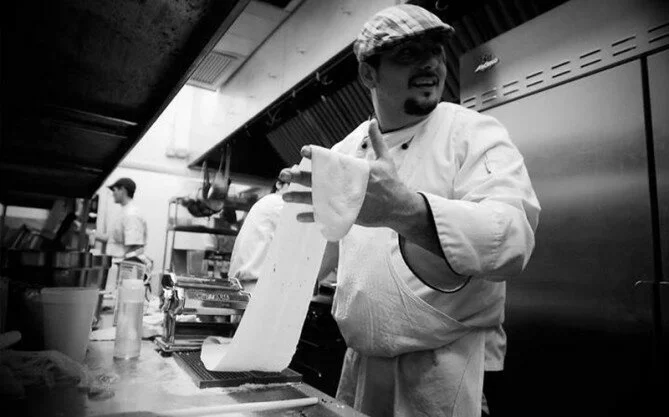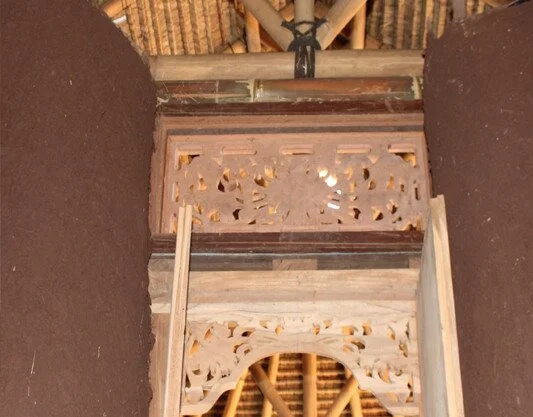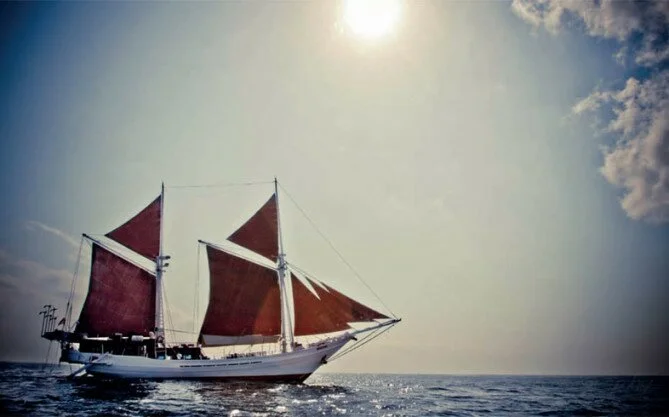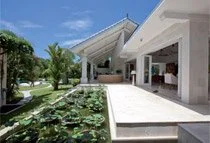- Lombok’s White Sand Paradise
- Lombok’s White Sand Paradise
- Lombok’s White Sand Paradise
Once a cherished destination for barefoot budget backpackers the three Gili Islands of Trawangan, Meno and Air off the northwest coast of Lombok, have suddenly found themselves attracting increased property values and a wealthier kind of tourist, creating the perfect environment for high-end resorts and developments to take hold and bring some positive meaningful change to the islands’ future. Di Somerton is one of the old guard who first stepped off the boat into the Gili Islands over 10 years ago at a time when this ‘hidden gem’ was just a slow backwater off the coast of Lombok. Villa Ombak was the only resort on the island and there were just a few dive operations, bamboo shacks for accommodation, and local restaurants selling cheap Indonesian and Bintang beer. “At that time we still had no fresh water, other than bottled water brought from Lombok and had intermittent electricity provided by PLN on mainland Lombok,” explains Di, Partner in The Beach House Resort and Owner of White Sand Weddings Lombok & Gili Islands. “There was no waste collection or recycling, and the more we developed, the more rubbish we accumulated and the more problems we encountered. We loved our unspoilt island paradise though, and we, like so many others, decided to stay and build our own ‚Beach House‘ by the sea. We weren’t the first, and as word got out and offshore investors started to realise the potential to build and develop businesses on the islands, a small surge in land sales began.”
- Lombok’s White Sand Paradise
- Lombok’s White Sand Paradise
- Lombok’s White Sand Paradise
- Lombok’s White Sand Paradise
- Lombok’s White Sand Paradise
Revealing The World’s Most E X O T I Q Find out how you can run your own Exotiq Property office in Australia, Indonesia, Singapore, Thailand, Malaysia, India, Sri Lanka, the Philippines and other fascinating destinations in the Asia Pacific region.

+62(0)361 737358 | [email protected]
www.exotiqproperty.com
Land was changing hands back then for around IDR 15 – 20 million per are and the local landowners started to join in as the development mushroomed. Real estate deals were still few and far between, however, as locals sat on what would turn out to be small goldmines. Consequently, due to high demand, land value shot through the roof. Building a small hotel or private villa by the beach was soon to become the domain of wealthy groups of offshore investors. IDR 100 million per are would buy you land inside the island in 2012, but because of the continual hikes in fuel prices, builders and material from Bali, it would cost you western prices to build your home away from home.”
But why is it happening so fast? The answer lies across the Lombok Strait in southern Bali, where property prices have reached such astronomical heights in the real estate boom that all but the very wealthy are being priced out of the market. This has made land banking and building on Lombok and the Gilis an even more attractive proposition for investment and tourism, as more and more people are lured across the water seeking the paradise that the Gili Islands offer. The fact that access has become so much easier with a multitude of fast boats running between Bali and Lombok daily, the availability of helicopter charters, and the new airport in Lombok bringing in direct flights from abroad, has only helped to increase the islands’ popularity.
Siti Purba of Exotiq Property believes that the current investment being seen in the Gili Islands is still the tip of the iceberg, with Gili Meno in particular in for some big changes. “I believe there is still an incredible amount of capital appreciation to be seen, not to mention investment returns on managed properties; a relatively new concept to the Gilis, but one which will certainly generate interest from further afield and further increase the tourist numbers.” “Tourist numbers to the Gili Islands continue to rise, and while Trawangan is by far the most established of the three islands, with Gili Air also showing significant growth, it is Meno that is set to offer a much more high-end destination for tourism for both foreign and domestic visitors, and to show significant returns for investors. Unlike Trawangan and Air, there are very few smaller pieces of land available on Meno, with the majority of available land of resort size rather than small building plots, and this will only encourage larger developers to move in, further increasing land prices,” says Purba.
- Lombok’s White Sand Paradise
- Lombok’s White Sand Paradise
- Lombok’s White Sand Paradise
In the past, a large amount of the accommodation currently operating in Gili Meno was built cheaply, while land prices were next to nothing, and with the market progressing as it is, there will be a lot of new development to cater for the new demographic of affluent tourist, with places such as BASK resort, a development of 82 luxury villas with a huge emphasis on eco sustainability that will cover 295 metres of white sand beachfront on the island’s eastern side, set to become a real game changer.
George Gorrow is property advisor and creative director for Bask and he explains why they chose Gili Meno for their project: “With Bali constantly exploding, and luxury tourism in Indonesia continuing to grow, everyone is searching for that pristine all encompassing Indonesian experience. And as such, we are seeing neighbouring islands like Gili Meno getting a lot of attention from these luxury travellers. Gili Meno for me is very much what I envisage a classic island oasis to be. A small atoll-like island, surrounded by beautiful eefs, abundant with turtles and sea life, white sand beaches, warm tropical crystal clear waters and a landscape full of palm trees.”
“I believe people are also now becoming more and more environmentally aware and wanting more from their indulgent holidays. They want to know that holiday is causing the least harm as possible to the planet, so they are looking for luxury resorts that are sustainable and environmentally conscious. These requests are pushing everything in the right direction and it’s exactly what we are aiming to deliver with Bask.”
Yes, the Gilis are paradise on earth, but they are not without their problems due to years of unchecked development. But thanks to the local government, organisations like the Gili Eco Trust and the tireless efforts of volunteers and concerned adoptive locals like Di Somerton, the islands and reefs are being resurrected from their once escalating decay.
“Rubbish collection and recycling is improving daily and we are seeing the return of colourful corals and fish and a thriving marine life, that is once again enticing snorkellers and divers to our shores,” says Di. “And we owe it to those who are committed to helping to save the islands from further destruction and lead the way for tourism to continue to thrive and benefit the local communities. That can only be a good thing.”
www.baskgilimeno.com




































































